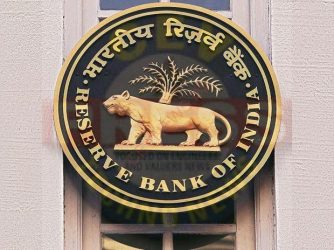RBI releases Discussion Paper on Securitisation of Stressed Assets Framework (SSAF)
Press Release: 2022-2023/1614
As part of the Statement on Developmental and Regulatory Policies released on September 30, 2022, RBI had proposed to introduce a framework for securitisation of stressed assets, in addition to the ARC route. It was announced that a discussion paper detailing relevant contours of the proposed framework would be issued shortly. Accordingly, RBI has today released the Discussion Paper on SSAF inviting comments from stakeholders.
The Discussion paper broadly covers nine relevant areas of the framework including asset universe, asset eligibility, minimum risk retention, regulatory framework for special purpose entity and resolution manager, access to finance for resolution manager, capital treatment, due diligence, credit enhancement, and valuation. It draws upon similar frameworks introduced in other jurisdictions, while trying to keep it structurally aligned with the framework for securitisation of standard assets.
Comments may be submitted by February 28, 2023 to The Chief General Manager, Credit Risk Group, Department of Regulation, Central Office, Reserve Bank of India, 12th Floor, Central Office Building, Shahid Bhagat Singh Marg, Fort, Mumbai – 400001, or by e-mail with the subject line “Discussion Paper on Securitisation of Stressed Assets Framework (SSAF)”.
(Yogesh Dayal)
Chief General Manager
I. Valuation of Securitisation Notes under SSAF
27. Under the SSA, the valuation of securitisation notes has been left to be determined as per the board approved policies. A similar approach may be adopted for NPA securitisation notes but given the inherent risks involved in the resolution of stressed assets in India, it is desirable that a graded form of risk-sensitive write-down can be provided in order to avoid the cliff-effect at the maturity of the securitisation notes.
Hence, a minimum 20% write-down of the outstanding value of unamortised notes (netted for repayments) each year, may be considered, corresponding to a full write-down over a maximum five-year period. The five year-period is in sync with the resolution period prescribed for asset reconstruction companies, and also takes into account the gradual deterioration in values of collateral with delays in resolution.
28. This regime is envisaged to be risk-sensitive so that the write-down is also a function of seniority class of the notes. The waterfall mechanism should be reflected in the write-down, with the equity tranche bearing the maximum risk, followed by mezzanine and then senior tranches. To achieve this objective, the exposure-weighted risk-weight of the tranches can be used as a proxy to distribute the write-down requirements across unamortised and unprovided tranches. An indicative illustration explaining valuation treatment for first two years is furnished in Annex – II with appropriate explanation.
Discussion Question 13: Does the proposed valuation regime capture the risk, associated with the securitisation notes with stressed assets as underlying, sufficiently? Does the proposed arrangement present any challenges from operational, accounting or any other perspective? If yes, what could be the alternative to the proposed regime.
TO READ FULL DETAILS CLICK ON THE LINK


